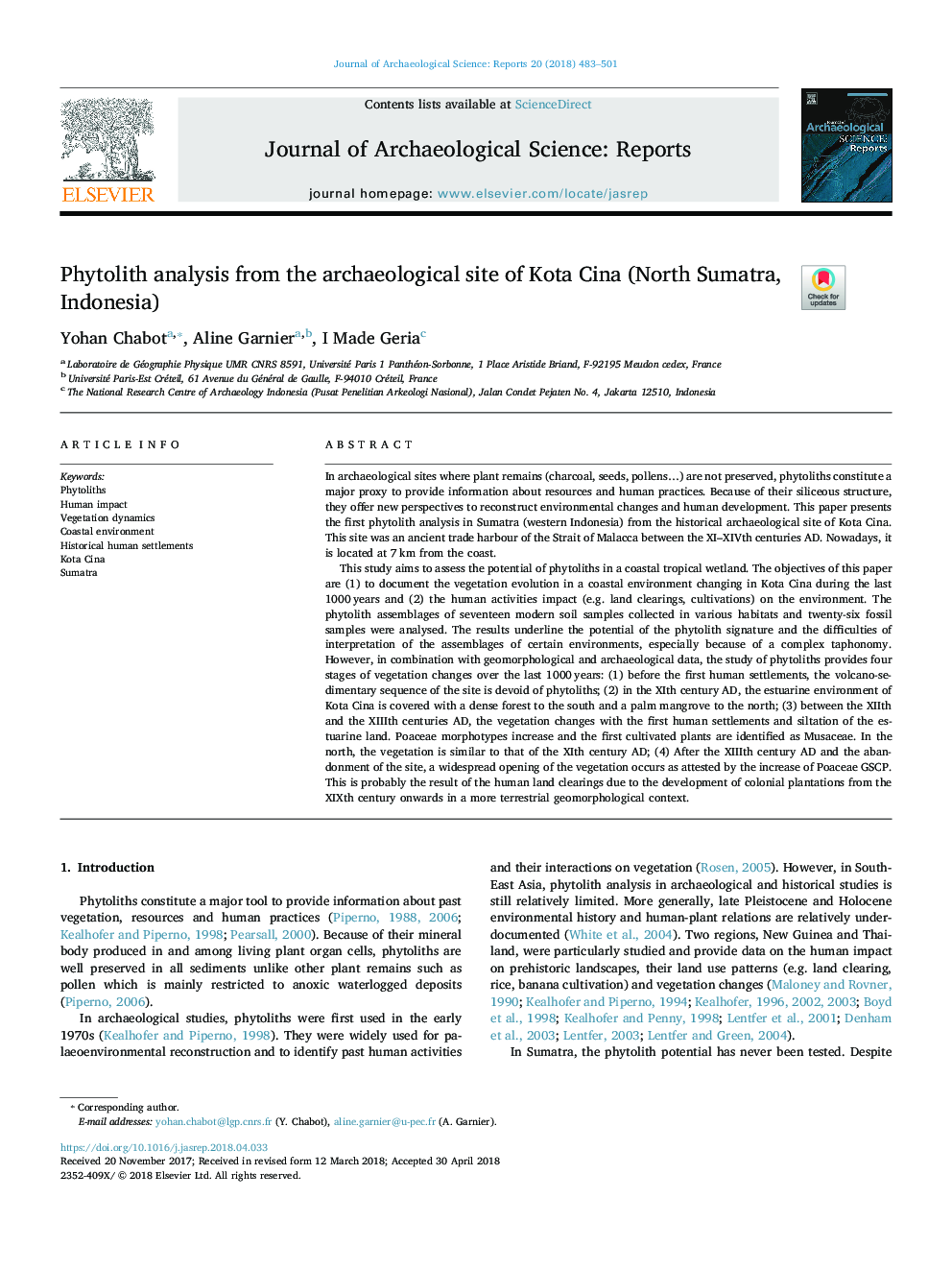| Article ID | Journal | Published Year | Pages | File Type |
|---|---|---|---|---|
| 7444467 | Journal of Archaeological Science: Reports | 2018 | 19 Pages |
Abstract
This study aims to assess the potential of phytoliths in a coastal tropical wetland. The objectives of this paper are (1) to document the vegetation evolution in a coastal environment changing in Kota Cina during the last 1000â¯years and (2) the human activities impact (e.g. land clearings, cultivations) on the environment. The phytolith assemblages of seventeen modern soil samples collected in various habitats and twenty-six fossil samples were analysed. The results underline the potential of the phytolith signature and the difficulties of interpretation of the assemblages of certain environments, especially because of a complex taphonomy. However, in combination with geomorphological and archaeological data, the study of phytoliths provides four stages of vegetation changes over the last 1000â¯years: (1) before the first human settlements, the volcano-sedimentary sequence of the site is devoid of phytoliths; (2) in the XIth century AD, the estuarine environment of Kota Cina is covered with a dense forest to the south and a palm mangrove to the north; (3) between the XIIth and the XIIIth centuries AD, the vegetation changes with the first human settlements and siltation of the estuarine land. Poaceae morphotypes increase and the first cultivated plants are identified as Musaceae. In the north, the vegetation is similar to that of the XIth century AD; (4) After the XIIIth century AD and the abandonment of the site, a widespread opening of the vegetation occurs as attested by the increase of Poaceae GSCP. This is probably the result of the human land clearings due to the development of colonial plantations from the XIXth century onwards in a more terrestrial geomorphological context.
Related Topics
Social Sciences and Humanities
Arts and Humanities
History
Authors
Yohan Chabot, Aline Garnier, I Made Geria,
